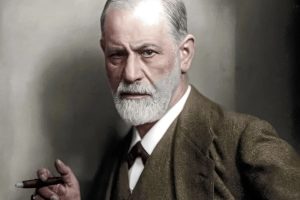Nordic Black theatre from Oslo Nolack theatre is a self-run theatre foundation established in 1992. According to Ethiopian News Agency (ENA) The Nordic Black Theatre has recently visited Ethiopia to show its splendid performances and share professional experiences with its counterparts in the country. Follow up report by the same news agency said that, the group has staged performances and presented shows that were successful and its stay was fruitful in exploring ways to collaborate with local artists and foster cultural exchange.
“Our tour in Ethiopia is productive and we are discussing with Ethiopian artists on ways to cooperate in the art sector and solidify the partnership in culture and theatre arenas and exchange our rich experiences . We would try to promote Ethiopia in a good way and be ready to tell the good story of Ethiopians whenever we would stage performances.” the Managing Director and Tour Manager Jarl Solberg was reported as saying by the news agency.
Ethiopia has hosted a number of foreign cultural groups in the past while Ethiopian artists had the opportunity to visit many countries across the world in their bid to familiarize Ethiopian arts and culture to foreign audiences. This two-way exchange of experiences were taking place more regularly in the past than they are now. The development of communication technology has apparently discouraged this kind of cultural exchanges whereby the artists of one country were physically present in another country to display their shows.
The magic of high- tech communication has made it possible for people anywhere in the world to learn distant cultures and artistic events in the comforts of their waiting rooms; although live performances are more important and more impactful than watching pictures of such events. The difference between the two is similar to the one between illusion and reality.
More than 30 years ago, the first and biggest cultural troupe was formed in Ethiopia and launched a marathon musical and dance journey to many foreign countries with the sole idea of promoting people- to- people cultural exchanges with the hope of promoting peace and avoiding conflicts. “In March of 1987, one of the greatest exhibitions Ethiopian music to ever take place kicked off to go on a whirlwind tour of 60 cities around the world in 118 days. It was to be a tour de force of great impact. But there was more to its story than just the art…the music and dance troupe that was known in Amharic as “Hizb Le hizb” (People to People), was a 54 person strong ensemble of standout Ethiopian musicians and performers…”
Although Ethiopian artists are famous for staging performances in foreign countries, both within and outside Africa with the objective of promoting African art and culture, there has never been a repeat of the 1987 grand tour of performers. However, small scale cultural tours and performances have taken place within the continent after that historic moment.
Sadly enough, Ethiopian stage performers have seldom visited foreign countries with a few exceptions. Ethiopian artists were present at the Dakar African Art Festival in 1966 under the auspices of UNESCO in which some 45 African countries have taken part. The other big cultural event is the world Festival of Black arts which is a month-long cultural and artistic festival that takes place in Africa.
It is a bit sad to realize that the old style forms of cultural exchanges have given way to the second kind of high tech media and that live performances are rare these days. This is occurring at a time when the word is facing the dangers of conflicts and misunderstandings that largely emanate from ignorance of other cultures and value systems and the prevailing global tendency for each country to look inwards to its cultures and values and ignoring the people next door.
The major cause of wars or conflicts in general is considered to be the lack of mutual understanding among different peoples or the spread of distorted pictures of different cultures and values that lead to wrong perceptions ultimately leading to hostility as a precursor to conflicts. That is why many people often say that conflicts start in the minds of people and then translate into belligerent attitudes that finally lead to active wars.
The opposite is also true. The more people of different cultures and values understand one another, the more they form positive attitudes in their minds and overcome hostile perceptions that are often formed by social media these days. This is all the more important in our time and age which has become exceptionally dangerous because of social media aggression that often distort the facts and spread false information that fan the flames of wars. As the saying goes, the truth becomes the first casualty during these times.
There are many ways of promoting positive values and overcome negative propaganda that causes conflicts among people or countries. And the best way to promote the values of peace and mutual understanding is through cultural and artistic exchanges between peoples who have different cultural values that remain unknown and intentionally or unintentionally cause disagreements and conflicts that could be prevented easily through regular cultural exchanges.
Cultural groups and more particularly theatre troupes, should make their presence felt in global artistic exchanges for many reasons. Theatre is an art form that is visual and appealing to mass audiences because it conveys vivid ideas through human movements and dialogues. As such, it is easier to convey your message through drama than through music or dance that requires more sophisticated knowledge of the arts and the ability to interpret the messages.
Theatre or drama can be understood and more appreciated and the message is readily grasped thanks to the vivid quality of this art form. “Popular Theatre is theatre which speaks to ordinary people in their own language or idiom and deals with issues that are relevant to them.. It also concentrates on awakening the capacity of those involved to participate, to make their own decisions and to organize themselves for common actions.” We can add by saying that theatre can also promote understanding among people from different cultures and value systems.
Unfortunately, foreign theatre troupes rarely visit Ethiopia or display their works in Ethiopia for many reasons. The first barrier is language. The Ethiopian theatre audience cannot see and appreciate foreign plays simply because of language barrier. It may be a weird experience what it feels when you go to see a play in a language that you do not understand at least in part. One cannot of course see plays without understanding the language in which the dialogues are expressed, that is to say without understanding what the characters are saying. Dialogue could be said to be the soul of a play. Although theatre is said to be a visual art, you cannot understand what plays are about without listening to the actors’ dialogues.
In Ethiopia, there are many people who understand English although the level of English comprehension is said to have gone down in the last few years. Many members of the young generation in particular are proficient in English as many of them have decent education in addition to the many hours they spend browsing social media, watching movies and reading books that can improve their command of the English language.
Unfortunately, few of them go to the theatres to see plays even in Amharic. Watching a play is not as easy as reading a book in the comfort of our home. Seeing a play is an emotional as well as a physical engagement with the story, the characters and what they say from beginning to last. Attending live performances invites the audience to be engaged both in the story as well as share the feelings of the performing actors and then interpret the meaning of the messages thus conveyed.
It is however possible to make silent plays or mimes as they are called, “to tell a story effectively without worlds is a difficult task indeed. It is the art of narration or expression through body movement. Silent plays are not however as effective as silent films.
“Silent film is a film with no synchronized recorded sound or more generally with no audible dialogue” On the contrary, sound movies can have much less movement and more dialogue because it is possible to tell the story through the characters’ dialogues whereas the absence of movement kills silent dramas because they are based on movement.
A play without dialogue cannot be enjoyable like silent films because gestures in those films are fast moving, more expressive and more understandable because movement acts like language. Silent plays or mimes cannot be as effective as silent movies for the simple reason that they do not create the same dramatic effects. Silent films were seen long before sound was introduced. That may be the reason why mimes are not popular these days as they were in the past. The interaction between the dramatists and the audience is what makes watching a play such an engaging experience. And language is the main dynamic that makes such an interaction possible.
In the final analysis, and despite the different attributes of the arts, what is important is that they can all be used to promote world peace, mutual understanding among various communities and thereby forge a common understanding of the most burning issues that are agitating our world these days. Hostile propaganda promoted by social media and inflammatory speeches or remarks made by politicians on a daily basis is tearing the fabric of societies apart leading to conflicts and bloodsheds in the world in general and in Africa in particular.
The world has more politicians and agitators than engineers and scientists and less artists and cultural personalities who could otherwise serve as a balancing force against aggressive and belligerent media rhetoric. To put the issue in a different perspective, Africa has for instance many artists and cultural personalities of world renown but they are not visible these days because they are shadowed by the vociferous voices of politicians that tend to make them invisible or inaudible.
The situation is even worse at grassroots level where poverty is rampant in most African communities and the struggle and daily hassle for survival diverts the communities from artistic pursuits as they are engaged in the daily war for the survival of the fittest. Nevertheless, there are also artists, although few in numbers who are struggling to make the human condition in Africa a lit bit tolerable or bearable by sharing their experiences through the theatre, music, dance, literature and other art forms.
In order to make up for the deficit of artistic interest across the continent, African artists should therefore work together with their counterparts from other countries and other continents. Artists in all countries share the common cause of serving the people in all places and situation to rally for peace, and build a better world free from the enormous greed, cynicism and violence that are rocking the world at this very moment.
BY MULUGETA GUDETA
THE ETHIOPIAN HERALD THURSDAY 23 NOVEMBER 2023





